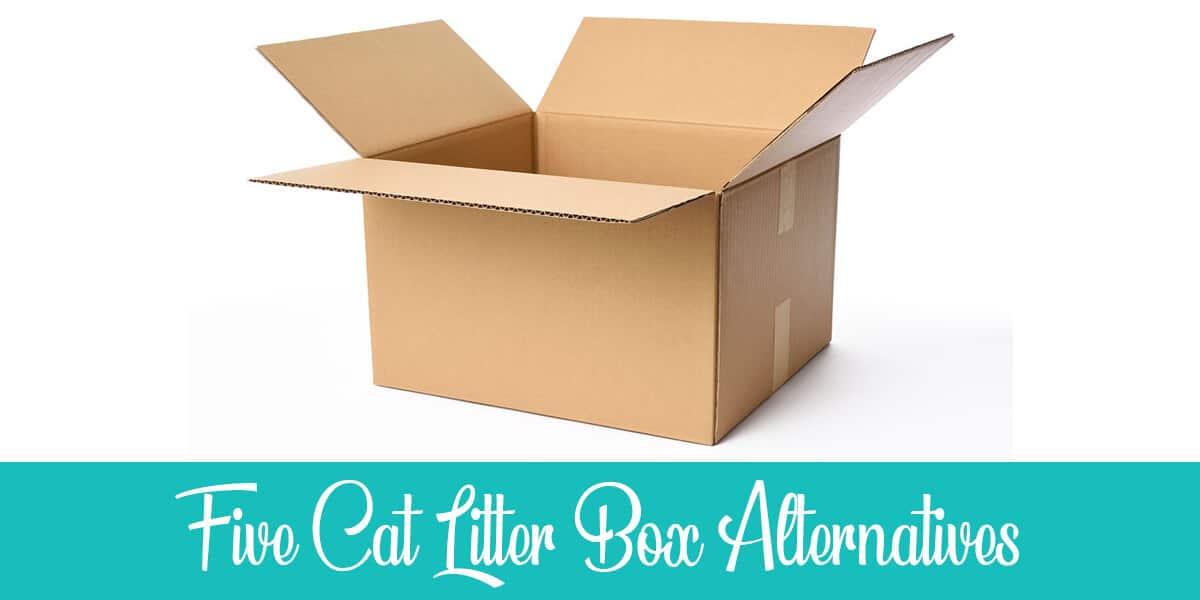Are you having a hard time finding the right-sized litter box for your cat? Many cat owners do. It’s not easy finding a litter box that meets your pet’s needs when it comes to height and size.
So, what do you do when you buy a box and come home only to find it doesn’t suit your kitty? Or if the one you have at home has reached its use-by date and you forgot to buy a replacement?
No worries. We’ve got you covered!
In this post, you’ll find five litter box alternatives for cats. All of them are cost-effective than traditional litter boxes. They’re also more eco-friendly. It’s a win-win!
Try them out and see which one your kitty likes the most.
Table of Contents
Litter Box Alternatives for Cats
As cat owners, you know the importance of litter boxes. Maybe you’ve just gotten your first cat and are looking to buy a new box or you want to replace your old one.
Either way, finding a sustainable alternative can be better for you and your cat. Not only will they reduce odors, but they can also save the environment!
5 Great Ideas to Use as Litter Box Alternatives
Go to any store and you’ll find litter boxes made of plastic and cost way more than they should. That piece of plastic will have to be replaced after several months and eventually end up in a landfill. Being eco-friendly is one of the main reasons cat owners look for litter box alternatives.
Another reason is that vets recommend you get two, or even three, and put them in various spots around your home. This has nothing to do with the size of your home or how many cats you have.
Maybe your cat prefers having one litter box all to themselves. They can be quite territorial, so knowing a few clever alternatives can be a lifesaver!
Even if you only have one cat and you live in a small apartment, having more than one is always better. It doesn’t mean you have to give up your traditional litter box altogether. It only means that, now, your cat has options.
1. Cardboard Box
Way back before we had plastic, cat owners probably just used any old cardboard box. They’re easy to get hold of and they’re biodegradable.
Best of all, they come in a variety of shapes and sizes. So, you’ll have no problem finding the perfect box for your kitty.
One major downside, however, is that they don’t hold up well to moisture. You’ll need to line the bottom and sides with some kind of absorbent material. Plus, you’ll need to change the cardboard box about every one or two weeks.
2. Disposable Litter Box
We can’t really say this is a litter box ‘alternative’ per se. After all, it’s still a litter box.
That said, there are multiple differences between these and the traditional, plastic ones. For starters, these are disposable. After a couple of weeks, just toss them in the trash.
Though, you won’t feel about throwing them out because they’re made from recycled paper. Being eco-friendly means they’re non-toxic and safe for your cat to use.
If you have a compost pile, chuck it in there instead of the garbage bin. It’ll make great soil for your flower bed!
The cherry on top is that some brands add activated charcoal or baking soda in their disposable litter boxes. This makes them better at minimizing odors and boosts their moisture absorption rate.
Related: Catlink vs. Litter-Box Extensive Brand Comparison
If you’re traveling with your cart, disposable litter boxes are pretty much the go-to option. They don’t take up a lot of space and you can just throw them out when they start showing signs of wear and tear.
3. Storage Containers
Everyone has one or two large plastic storage containers lying around their home. Why not empty it and use it to make a litter box alternative for your cat? Choose a container tall enough for your cat to stand and move comfortably. You don’t want them feeling cramped or stifled.
The best part is you can use it with or without the cover. Some people choose to leave the cover on the container to reduce dust and debris.
If you decide to use the lid, cut out a hole big enough for your kitty. Make sure you cover the edges with masking tape or sand them down to prevent cuts or injuries.
Next, add a few sheets of newspapers or any other type of liner. Finally, place a layer of the cat litter of your choice. That’s it!
Your cat will no doubt have fun with its new, top-entry litter box. Best of all, you’ll have saved yourself a few bucks in the process.
4. Repurpose or Build a Wooden Box
Take a look in your attic or garage. Do you have any type of old, unused furniture that can be repurposed into a litter box?
Use your imagination and some basic hand tools. Then, in a matter of hours, you can have a respectable-looking litter box. Things like storage benches, hutches, and cabinet dressers are all great ideas.
This can come in handy especially before or after a move. Before the move, you’re busy trying to gather everything up and pack it away. Worrying about litter boxes is probably the last thing on your mind.
The same goes for after the move. You’re starting to settle in and empty a few boxes at a time. You have no idea where the litter box is. So, you use your imagination and repurpose an old piece of furniture!
There’s another option, but it only works if you have woodworking experience. You can gather some usable wood pieces and make a DIY litter box.
Must Read: Cat Spraying No More review
Just like any building project, you’re going to need a blueprint for your design. Then, measure out the size and shape you want your litter box to be.
Before you start cutting up the wood, check that it’s in good condition. If it has nails or insect infestations, look for another one to avoid harming or injuring your kitty.
The next step is to cut, glue, and sand the box. You can add a coat of primer or paint.
Just make sure you choose a paint brand that’s pet-safe. These usually come with a ‘non-toxic’ label, which means they have no heavy metals. Some contain low levels of volatile organic compounds (VOC) or none at all.
Ask the sales clerk or check online and pick a paint type that won’t harm your kitty. To keep your pet safe, avoid the following ingredients at all costs:
- Acetone
- Ammonia
- Biocides
- Formaldehyde
- Polyurethane
Related: 3 Ideas to Reuse Crystal Cat Litter
5. Stainless Steel Pans
Stainless steel pans may be the last thing that comes to mind when talking about litter boxes. However, you might be surprised to know they work great! For one, they don’t hold on to that ‘pee’ smell as plastic litter boxes do.
In addition, stainless steel is resistant to bacteria. It’s why it’s so much easier to clean than plastic.
It’s also reusable, unlike cardboard boxes. Since they produce less waste, it means they’re better for the environment.
Plus, stainless steel is completely safe for your kitty. In fact, vets usually recommend stainless steel because they’re hygienic and non-toxic.
Another advantage to using stainless steel pans as litter box alternatives is their design. These pans come with rounded, smooth edges that cats love jumping on and over. Plus, there’s no risk of injuries or scratches.
Find a suitably sized pan that feels roomy and comfortable for your kitty. They should be able to spin around without injuring themselves.
Keep in mind that cats don’t like being in tight areas. Even though they like hiding in cramped spaces, they don’t enjoy being closed in. It may cause them to feel anxious and claustrophobic.
You can always use aluminum baking pans instead of stainless steel. They’re just as safe and hygienic for your kitty, as well as easy to clean.
Their only problem is they’re not sturdy to use on their own. So, it’s better to use them as an inner liner inside something that can hold up under your cat’s weight.
Wrapping Up
One of the many perks of owning a cat is, drum roll please…litter boxes! They’re so much easier to deal with than having to take your dog for a walk so they can do their business or having to pick up their mess off the sidewalk.
They may be convenient, but litter boxes aren’t perfect. They fill your home with that distinct cat odor. Plus, it can get tiring having to regularly clean and maintain them.
That’s why the five litter box alternatives for cats we mentioned above can be a nice change. The options are pretty much endless. All you need to do is find something that meets your feline’s needs.
With a bit of imagination, you’re bound to come up with something amazing! Besides putting a fresh spin on the traditional box, they may even make you hate the cleaning process a tiny bit less.

I’ve been living with cats since 2008 and I can confidently say I have more feline friends than humans lol. I currently live with 5 cats in different life stages; two of them are less than one year old, one is 2-ish years old and the oldest two are 9-ish years old. I’ve developed a strong bond with cats over the years and I’m eager to share my experience through this blog. You can learn more about my cats here.


